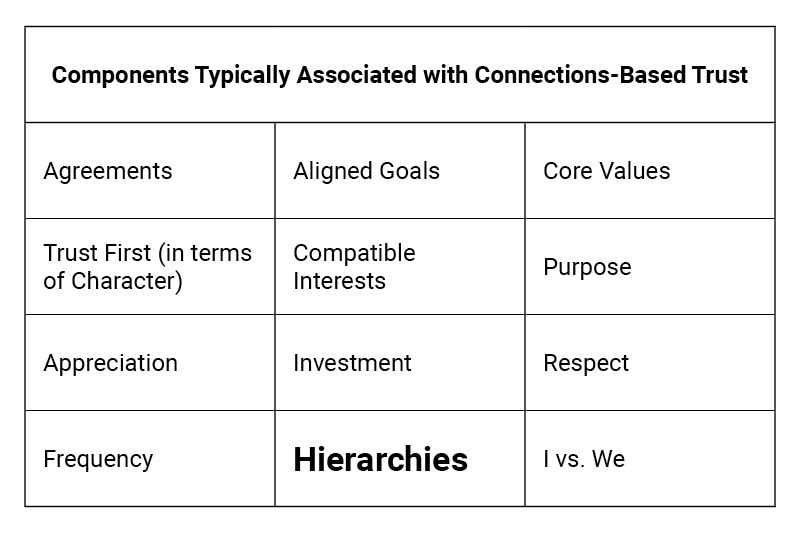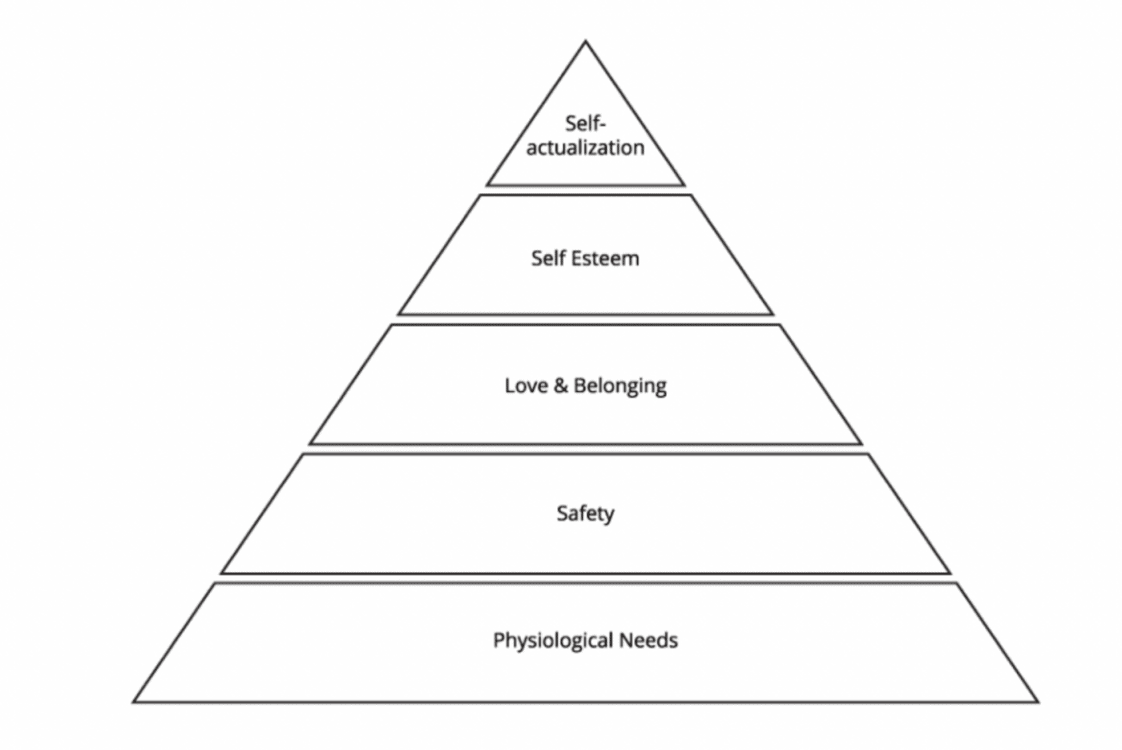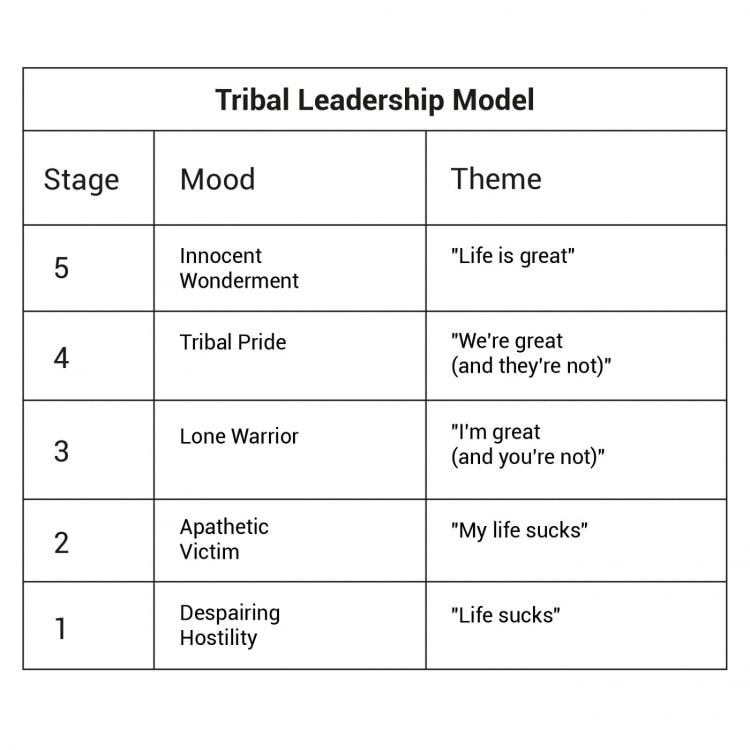As I wrote about in “Part Four: The Math of Trust” of this series of essays, “About Trust: A Forever a Work In Progress,” Connections-Based Trust is all about the non-character, non-competency-based things that keep us connected in a healthy way.

In Part 7a, I introduced nine hierarchies I believe every company builder and / or leader should be aware of / understand and manage:
- Needs
- Rights
- Values
- Culture / Purpose
- Ego (aka emotional intelligence)
- Competency
- Structure
- Consciousness
- Stages, States, and Levels
I also shared a summary of how to think about the hierarchies associated with Needs, Rights and Values. In this essay, I present a hierarchically anchored framework for one approach to thinking about and assessing culture.
Ahhh… Culture
As I’ve hopefully done a decent job of case-making so far in this series About Trust, we humans are extraordinarily social/tribal creatures. We’re social/tribal for a host of reasons not the least of which is — unlike cattle, horses, sheep, lions and tigers, all of which can independently stand, grow, survive and even hunt for food soon after birth — we are born totally dependent upon at least one other human for a number of years, even decades for our development. This includes interacting with lots of other humans and tribes before we are likely to evolve into fully functioning, reasonably well-adjusted adults (aka “content,” “happy,” hopeful, at peace with ourselves and others, etc.) and have a decent shot of moving up Maslow’s Hierarchy of Needs (HoN).

The consequence of this is as we get closer and closer to being self-actualized (the top of Maslow’s HoN), our most valued tribes begin to be comprised of groups of people who not only make us feel wanted, appreciated, safe and inspired but those we Trust. This helps us to become a better version of ourselves, as we engage in Work that helps make the world a better place.
In my opinion, if we are a Creator / Worker who wants to be a part of building a great company, we want to help build what I’ll call a “High Trust Company” (HTC). HTC’s are companies where people feel like they belong, they are meaningfully contributing, they are appreciated, they trust the company and their colleagues and the company trusts them, they love why the company exists and where the leaders want to take it, they feel like their Unalienable Rights are respected, their Needs are being filled, and they want to meaningfully participate in the company’s journey, full stop!
At the risk of stating the obvious, well-adjusted and enlightened Creators / Workers (i.e., those who make decisions based upon the best interests of their Stakeholders over the longer run) minimize time shared with people they don’t trust, who hurt them, who bring them down, or who have materially conflicting values, interests, competencies, goals and/or don’t respect their Unalienable Rights and Needs.
In short, without Trust, we’ll never get the full power of our organizations.
In HTC’s, everyone works for the best interest of the company, not themselves. This enables each person (assuming they are in a role, or “Seat,” they are well-suited for in terms of competency and the capacity to grow with the Seat as the demands of the Seat grow) to leverage their strengths, let others help them mitigate the company’s exposure to their weaknesses, and concentrate their efforts on doing the things they are most passionate about.
In its simplest terms: In a low-trust company, 1 + 1 + 1 < 3 (and sometimes a lot less), in a medium trust company 1 + 1 + 1 = 3, and in a HTC 1 + 1 + 1 > 3 (and, most often, much greater).
In short, without Trust, we’ll never get the full power of our organizations.
One of the hierarchy-based frameworks (aka a tool) that helps me help my clients think about, assess and enhance organizational trust is based upon the work of Logan, King and Fischer-Wright as explained in their book Tribal Leadership. We use this tool — what I call the Tribal Leadership Model or TLM — to help us think about and assess not just the overall levels of Trust but talk about the health of their culture overall.
In my experience, the framework is fairly simple to teach and use. It’s also powerful because it’s easy to do quick assessments at individual, team, department and whole company levels. I purposely wrote “we can do this…” because I don’t encourage my clients to go there all at once. I prefer to work from the top down; the pace varies for a host of reasons.

Before I get into reviewing the framework, I feel compelled to share that I prefer to think of what Logan et al refer to as “stages” as “levels.” I prefer the term levels because I think of stages as things everyone, or every living thing, goes through (e.g., Stages of Ego Development, a topic for a future essay). In my opinion, it’s possible for teams, departments, and companies to start at any level and for them to go up and down based upon both internal and external factors.
A Summary of the Five Levels of Culture
Level One (L1) Culture
The prevailing life-view (i.e., the view held by the majority of the employees) in an L1 Company is “life sucks” and we should blow this place up. Employees are not just angry, they are hostile and the hostility is typically channeled toward all stakeholders, not the least of which tend to be fellow employees and the leadership team.
I don’t know about you but I would hate to work at an L1 company. Even worse, I’d hate to be an investor or the CEO of an L1 Company. Yikes!
The good news is that the research conducted by Logan et al at the time of the publication indicated that less than 5% of organizations could be categorized as having L1 Cultures.
Level Two (L2) Culture
The prevailing life-view of an L2 company is one where most employees think their lives suck. That said, they look around and can see that some people seem to be doing OK but there are a lot of victims and “Reactors” (versus “Creators”) running around. Innovation is non-existent (i.e., very few Creators); urgency is reserved for racing out of the parking lot at 5 pm, and accountability is rare.
At the risk of stating the obvious, L2 cultures are rarely places that would be described as extraordinarily productive, humane and resilient. These are companies that are surviving and ultimately, likely to die unless serious changes are embraced. According to Logan et al, about 25% of the companies they surveyed were at L2.
Level Three (L3) Culture
This is where most companies tend to exist (>50% according to the authors). The authors noted: “Knowledge is power, so people hoard it, from client contacts to gossip about the company.” Internally its person against person and department against department.
These are the companies where every department is doing its own thing and may or may not be competing with the other departments for resources, attention, respect, etc. These are the companies that are growing but where people are talking behind each other’s backs and you likely find that there is a wide array of trust scores not just across the company (i.e., measuring the level of trust connecting my department and yours) but up and down and even with their other stakeholders.
These are the organizations where growth happens but it takes so much more effort than it would otherwise if they could come together, unite around a set of guiding principles (e.g., purpose, core values, value proposition, the definition of an ideal client), lean in toward one another, and build an L4 Culture.
Level Four (L4) Culture
This is where we see most HTC’s. People work together for the greater good of the company. They don’t talk behind each other’s backs (“Are you going to tell her or should I?”). The leaders have zero patience for politics, personal agendas, and they are very open about what’s working and not working. These organizations excel at:
- Showing appreciation
- Turning expectations into agreements
- Giving competent people real autonomy
- Genuinely caring about every one of our Stakeholders
- Being totally transparent about everything (no need for anonymous surveys)
- Investing in our people’s growth
- Providing a compelling view of our collective future
Level Five (L5) Culture
These are, IMO, the super cool companies. They’re 100% about making a huge dent in the world. Virtually every employee has bought into the vision and wants to be a part of something special. They know that their company isn’t just doing work but that everyone is engaged in deep and meaningful Work.
You know these companies when you see them. There is a sense of pride in their Work. They are proud of their company. People go out of their way for the greater good. Conflict is easy because it’s all from a place of trust and good intent. Failure is tolerated because it was done in the pursuit of being better. If it’s a company where people work together in an office, you can sense great energy just walking into the door. If it’s a company that’s 100% WFA, you start to sense this after just a couple of interactions with their employees. There is a certain je ne sais quoi that you just feel.
The thing I love about L5 companies is they’re being rooted on by every one of their Stakeholders. Everyone — employees, customers, suppliers, partners, etc. — is there to help them win and willing to forgive failure. That, IMO, is one of the core measurables associated with being extraordinarily resilient.
At the risk of stating the obvious, HTC’s are built to sustain at least L4 Cultures regardless of what’s going on externally. This is why it’s so important to focus not just on building a company that is both productive and humane, but one that is resilient.
Executive Summary
- “High Trust Companies” (HTC’s) are companies where people feel like they belong, they are meaningfully contributing, they are appreciated, they trust the company and their colleagues and the company trusts them, they love why the company exists and where the leaders want to take it.
- In HTC’s, everyone works for the best interest of the company, not themselves.
- Without Trust, we’ll never get the full power of our organizations.
- The 5 levels of company culture:
- Level One — Employees are angry and hostile toward fellow employees and the leadership team.
- Level Two — Employees are victims and “Reactors” (versus “Creators”). Innovation is non-existent; urgency is reserved for leaving work at 5pm; and accountability is rare.
- Level Three — Every department is doing its own thing and may or may not be competing with the other departments for resources, attention, respect, etc. Knowledge is power and some may hoard information. Growth happens but it takes more effort as the organization is not aligned around common values, vision and goals.
- Level Four — People work together for the greater good of the company.
- Level Five — These companies are 100% about making a huge dent in the world. Virtually every employee has bought into the vision and wants to be a part of something special.



